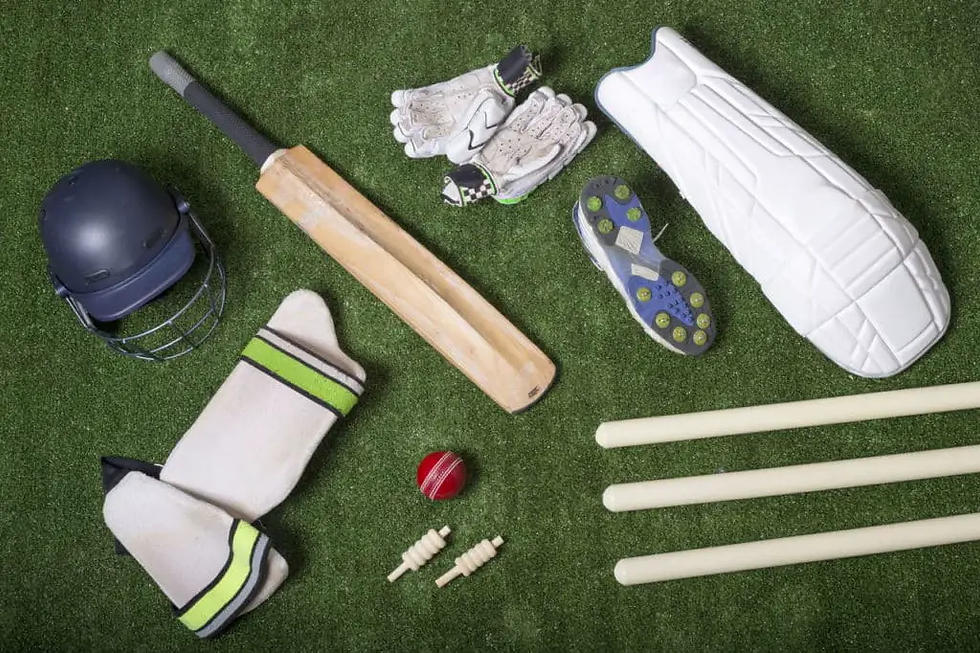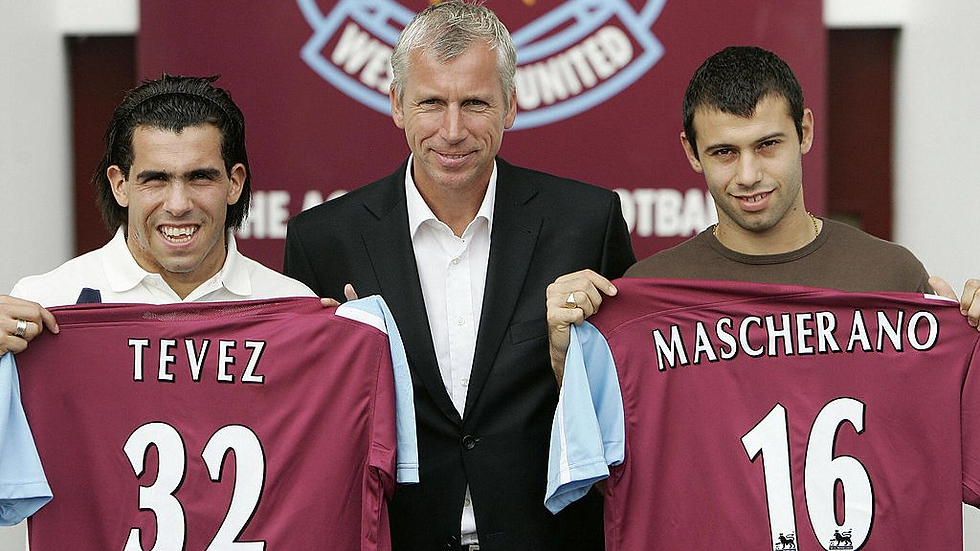Unpacking the Rules and Regulations of Professional Clothing and Equipment in Cricket: Guide for Fan
- globalsportspolicy
- Apr 18, 2023
- 7 min read
*Written by Prof. Nishant Sheokand.

"The right equipment and clothing can make a huge difference to a player's performance on the field. It not only provides comfort and protection but also helps build confidence and enhance one's overall game."
~Sunil Gavaskar
Introduction Professional cricket is a highly regulated sport, with strict rules governing player conduct, equipment, and attire. In particular, clothing and equipment regulations are a crucial part of ensuring fair play and player safety on the field. It is a sport that requires a significant amount of specialized equipment to play. From bats and balls to helmets and pads, there are many items that players must use to ensure their safety and performance on the field. However, the use of equipment and clothing is not just a matter of personal preference – there are regulations and rules that govern what players can and cannot wear or use in professional cricket matches. These regulations apply to all forms of professional cricket, including Test matches, One Day Internationals, and Twenty20 matches.
The International Cricket Council (ICC) is the governing body of cricket, and it sets the regulations for equipment and clothing that apply to all international matches. The ICC has established a detailed set of rules that cover everything from the weight and size of the ball to the dimensions of the playing field. When it comes to clothing and equipment, the ICC has also established several regulations that aim to ensure player safety and prevent any unfair advantages.
Clothing Regulations
The clothing regulations for professional cricket are set out in Law 19 of the Laws of Cricket. According to this law, players must wear clothing that is approved by the International Cricket Council (ICC) and their national cricket board. The clothing must be clean, and free from any logos or other branding that may conflict with official sponsorships. In addition, players are required to wear cricket shoes with spikes that meet the regulations set out by the ICC. These regulations stipulate the maximum length of spikes allowed, as well as the number of spikes that can be used on each shoe.
Protective Equipment Regulations
Protective equipment is a crucial part of cricket, helping to prevent injury to players during matches. The ICC has set out detailed regulations governing the types of protective equipment that players are required to wear during matches.
These regulations are set out in Appendix E of the ICC Playing Conditions and cover a range of protective equipment, including helmets, thigh guards, chest protectors, and arm guards. The regulations specify the minimum standards that each type of equipment must meet, as well as the testing procedures that must be used to ensure compliance.
Players are required to wear a helmet that meets the standards set out in British Standard BS7928:2013, or any subsequent standard that may be adopted by the ICC. The helmet must also be fitted with a faceguard that meets the standards set out in British Standard BS7929-2:2009, or any subsequent standard that may be adopted by the ICC.
Thigh guards, chest protectors, and arm guards must also meet specific standards set out by the ICC. For example, thigh guards must have a minimum thickness of 40mm, while chest protectors must be made of materials that meet the required impact resistance standards.
Another important regulation in cricket is the size and weight of the bat. The ICC has established specific limits on the length, width, and thickness of the bat, as well as the weight of the bat. These rules are designed to ensure that the game remains fair, and that batsman cannot gain an unfair advantage by using an excessively large or heavy bat. In April 2017, the ICC announced that the bat's size would be restricted, particularly for T20 matches, as the size of the bats was getting too big, making it easier for the batsmen to hit the ball out of the ground.
According to the current regulations, the length of the bat cannot be more than 38 inches, and the width cannot exceed 4.25 inches. The edge of the bat cannot be more than 1.56 inches, and the overall depth cannot be more than 2.64 inches. In terms of weight, the bat cannot weigh more than 1.22 kilograms. The restriction on the size and weight of the bat is necessary to maintain a balance between the bat and ball. An excessively large bat would give batsmen an unfair advantage as they would be able to hit the ball harder and further. This would also make it difficult for bowlers to take wickets, thus affecting the outcome of the game. By enforcing these regulations, the ICC ensures that cricket remains a fair and competitive game.
Finally, there are regulations around the types of clothing that players can wear on the field. For example, players are not allowed to wear clothing that has any political or religious slogans or messages. They are also required to wear clothing that is appropriate for the weather conditions, such as long-sleeved shirts and trousers in cold weather.
Penalties for Non-Compliance
Players who fail to comply with clothing and equipment regulations may be penalised and fined. These penalties are set out in the ICC Code of Conduct, which outlines the various offences that may result in disciplinary action.
For example, players who wear clothing or equipment that does not meet the regulations may be subject to a fine or a suspension. In addition, players who tamper with their equipment in any way, such as by removing or altering padding, may also be subject to disciplinary action.
In 2019, during a World Cup match between England and Pakistan, Pakistani player Imam-ul-Haq was penalized for wearing a logo on his bat that was not authorized by the International Cricket Council (ICC). As per ICC regulations, a player can only use a bat that has been approved and has an authorized manufacturer's logo. Imam-ul-Haq was penalized with five penalty runs and was asked to change the bat immediately. This penalty had a significant impact on the match as Pakistan eventually lost the game by only 12 runs. This incident highlights the importance of adhering to equipment regulations in cricket, as even a minor violation can result in severe penalties and impact the outcome of the game.
In 2018, Indian player KL Rahul was fined for wearing a helmet that did not comply with ICC regulations during a Test match against Afghanistan. The helmet he wore had a stem guard which was not of the required standard. The stem guard is a protective attachment that can be added to the helmet to protect the neck from a rising delivery. The ICC regulations require that the stem guard must be made of "vibration-absorbing material" and must extend down to the middle of the back. Rahul's helmet did not meet these requirements, and as a result, he was fined 15% of his match fee.
In 2016, during a Big Bash League match, Melbourne Renegades player Chris Gayle aka The Universe Boss was fined for using an unauthorized black bat. The bat had a black blade, which is not a traditional cricket bat colour. The ICC rules state that the blade of the bat must be the same colour as the primary colour of the team's clothing. Gayle was fined 10% of his match fee for the offense. The umpires had informed Gayle that he could not use the bat, but he went ahead anyway. Gayle later tweeted, "I'm disappointed to have been fined for attempting to entertain fans with a black bat. I accept the umpire's decision but I am disappointed." The incident gained a lot of attention in the media and raised questions about the use of non-standard equipment in cricket. However, Gayle's use of the bat was not deemed to be a deliberate attempt to flout the rules, and he accepted the fine without further protest.
In domestic cricket leagues such as the IPL and the BBL, there may be additional regulations that apply. For example, in the IPL, players are required to wear a specific type of jersey that features the logo of their team sponsor. In the BBL, players are required to wear brightly coloured clothing, which is intended to make the game more appealing to spectators.
Conclusion
In conclusion, the regulations and rules around clothing and equipment in professional cricket are extensive and detailed. These regulations are designed to ensure player safety, prevent any unfair advantages, and maintain the integrity of the game. Major cricket leagues such as the IPL and the BBL also have their own specific regulations that players must adhere to. By following these regulations, players can ensure that they are in compliance with the rules of the game and can focus on delivering their best performance on the field.
*The author is an Associate Professor of Law, at Vinayaka Mission’s Law School, VMRF-DU, Chennai, India.
(The image used here is for representative purposes only)
References:
"The Laws of Cricket - Law 19 (Clothing and Equipment of Players)" - Marylebone Cricket Club (MCC) - The official website of the governing body of cricket, MCC, provides the Laws of Cricket, including Law 19 which outlines the clothing and equipment regulations for players in professional cricket matches. (https://www.lords.org/mcc/the-laws-of-cricket/law-19-clothing-and-equipment-of-players/)
"ICC Playing Conditions - Appendix E: Playing Clothing and Equipment" - International Cricket Council (ICC) - The official website of the ICC provides the playing conditions for international cricket matches, including Appendix E which covers the regulations for playing clothing and equipment, including helmets, chest protectors, and other protective gear. (https://pulse-static-files.s3.amazonaws.com/ICC/document/2017/09/24/2e20cace-04c5-4b44-a46e-9e5325c32b57/1-Appendix-E-Playing-Clothing-and-Equipment.pdf)
"ICC Bat Regulations" - International Cricket Council (ICC) - The ICC website provides the regulations for cricket bats, including the size, weight, and other specifications that bats must adhere to in professional cricket matches. (https://www.icc-cricket.com/about/cricket/rules-and-regulations/equipment-regulations/bat-regulations)
"Imam-ul-Haq Penalized for Logo Breach" - ESPNcricinfo - This news article from ESPNcricinfo reports on the incident involving Pakistani cricketer Imam-ul-Haq being penalized for wearing a logo on his bat that was not authorized by the ICC during a World Cup match in 2019. It highlights the importance of adhering to equipment regulations in cricket and the potential penalties for non-compliance. (https://www.espncricinfo.com/story/imam-ul-haq-penalized-for-logo-breach-1183226)
"ICC Code of Conduct for Players and Player Support Personnel" - International Cricket Council (ICC) - The ICC website provides the Code of Conduct for players and player support personnel, which outlines the various offences that may result in disciplinary action, including violations of clothing and equipment regulations. (https://www.icc-cricket.com/about/cricket/rules-and-regulations/code-of-conduct-for-players-and-team-officials)




Comments